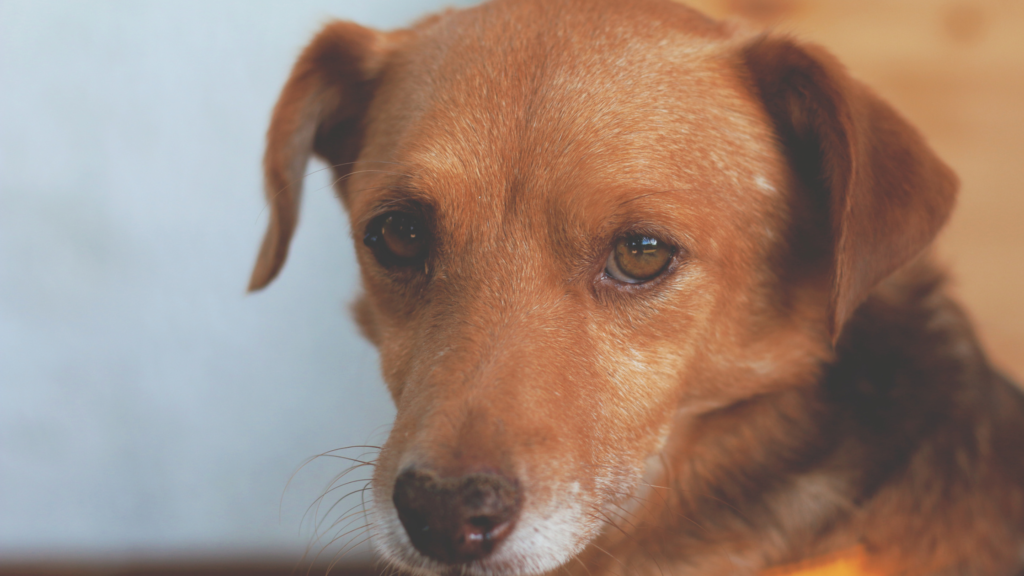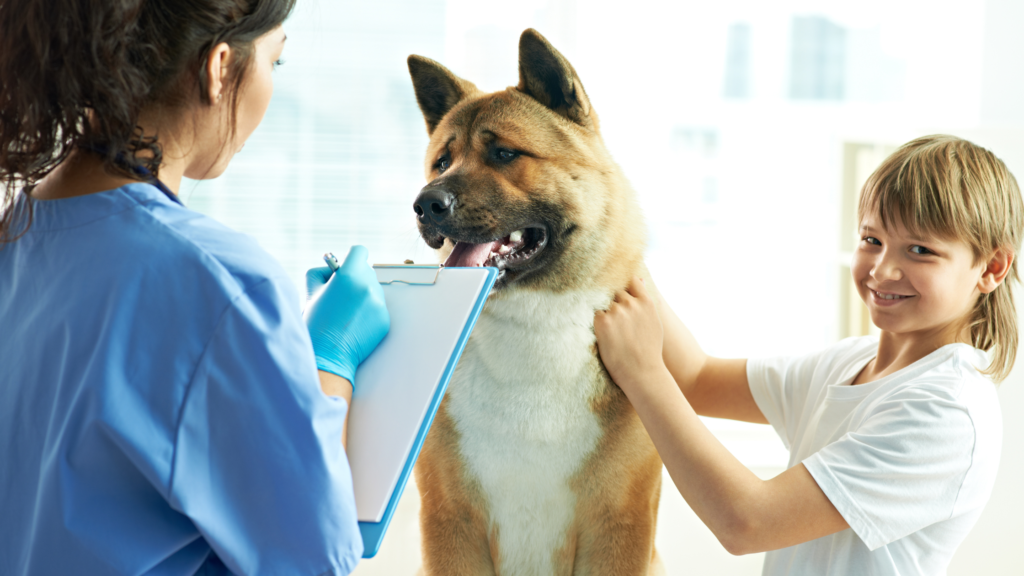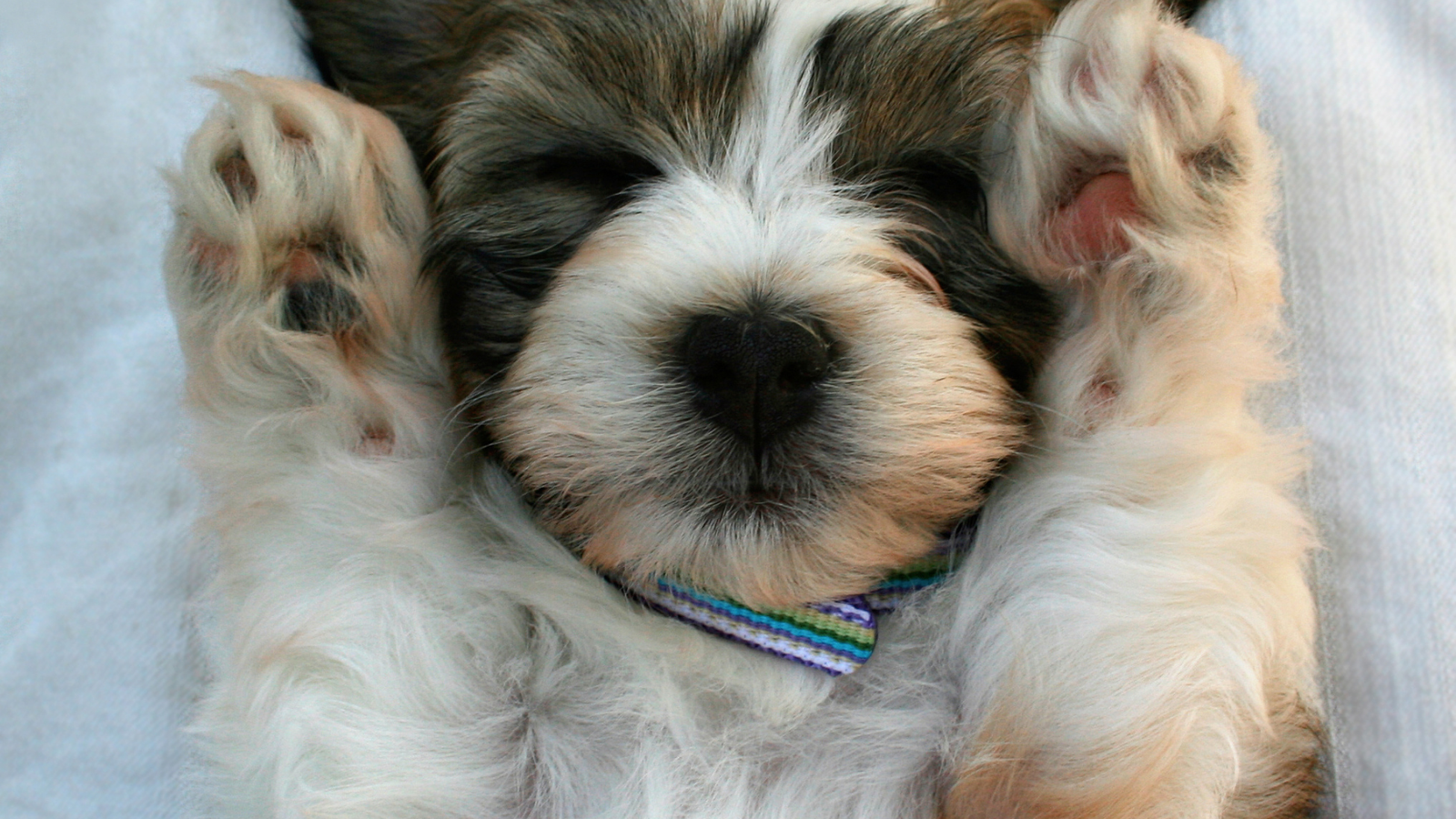Did you know that dog whiskers are more than just attractive features on your furry friend’s face? They play a crucial role in their sensory perception and overall well-being.
From detecting changes in their surroundings to communicating with other animals, dog whiskers are fascinating and essential.
However, what happens when these delicate sensory tools become ingrown?
This comprehensive guide will delve into the intriguing world of ingrown dog whiskers and provide valuable insights into their causes, prevention, and treatment.
Whether you’re a dedicated dog owner or simply curious about our four-legged companions, this article will illuminate an often-overlooked aspect of canine care.
Picture this: your adorable canine companion exploring the world around them with their inquisitive snout and those adorable whiskers.
Scientifically known as vibrissae, these whiskers are not just a charming addition to your dog’s appearance.
They serve a vital purpose, acting as sensitive receptors that provide essential information about their environment.
Like our senses of touch and sight, dog whiskers are intricately connected to their ability to navigate and perceive the world.
Now, let’s address the topic at hand – ingrown dog whiskers.
While dog whiskers typically grow straight outwards, they can occasionally become trapped or embedded, leading to discomfort and potential complications for your furry friend.
Ingrown dog whiskers are an inconvenience and can indicate underlying issues that require attention.
This article explores the causes behind ingrown whiskers, identifies the telltale signs of trouble, and discusses effective preventive measures to keep your dog’s whiskers healthy and unobstructed.
Whether you’re a proud owner of a whiskered canine companion or simply fascinated by the intricacies of our furry friends, this guide will equip you with the knowledge to ensure your dog’s whiskers stay in optimal shape.
From practical grooming tips to understanding the importance of a stress-free environment, we’ll cover everything you need to know about dealing with ingrown dog whiskers.
So, let’s embark on this enlightening journey and learn how to keep those whiskers wagging happily!
Understanding Dog Whiskers and Their Function

A. Explanation of Dog Whiskers
Technically known as vibrissae, whiskers are specialized hairs that protrude from specific areas on a dog’s face, primarily around the muzzle, eyebrows, and cheeks.
These whiskers are more than just adorable facial features—they are essential tools for our canine companions.
Dog whiskers have distinctive characteristics that set them apart from regular fur. They are longer, stiffer, and more deeply rooted in the skin.
Whiskers are typically thicker at the base and taper to a finer point, providing dogs with increased sensitivity and perception.
B. Importance of Intact and Healthy Whiskers
1. Sensory Perception and Environmental Awareness
Dog whiskers are remarkably sensitive to even the slightest changes in their surroundings.
They function as sensory receptors, enabling dogs to gather information about their environment, objects, and even the movements of other animals.
Whiskers detect air currents, vibrations, and changes in air pressure, helping dogs navigate and make sense of their surroundings.
Imagine your dog exploring a dimly lit room. Their whiskers act as built-in radar; alerting them to potential obstacles or narrow spaces they may need to squeeze through.
They can also sense the presence of nearby objects or detect the subtle movement of prey. It’s a unique system that allows dogs to navigate with precision and confidence.
2. Communication and Social Interactions
Beyond their environmental awareness, dog whiskers are crucial in communication and social interactions.
Dogs are adept at reading subtle body language cues; their whiskers contribute to this ability.
During social interactions with other dogs or humans, whiskers provide valuable information about the emotions and intentions of those around them.
When a dog is relaxed and at ease, their whiskers are typically neutral.
However, when they become alert, excited, or anxious, the whiskers may move forward or slightly fan out, indicating their emotional state.
Similarly, dogs may use their whiskers to gauge proximity and establish boundaries during play or greetings.
If their whiskers are touched or bent back, it can signal discomfort or a need to adjust the interaction.
In summary, intact and healthy whiskers are vital for a dog’s sensory perception, environmental awareness, and social communication.
Understanding the significance of these specialized hairs allows us to appreciate the intricate world our dogs experience daily.
Now that we’ve explored the fascinating role of dog whiskers let’s delve deeper into the topic of ingrown dog whiskers – a condition that can disrupt these crucial functions.
By better understanding ingrown whiskers, we can proactively address any issues that may arise and ensure our canine companions continue to thrive.
Causes and Symptoms of Ingrown Dog Whiskers

A. Common Causes of Ingrown Whiskers
1. Curvature or Improper Growth Direction:
Sometimes, a dog’s whiskers may grow in a curved or irregular pattern, causing them to bend and potentially become ingrown.
This can occur naturally due to genetics or be influenced by external factors such as repeated contact with tight-fitting collars or rubbing against surfaces that put pressure on the whiskers.
2. Damage or Trauma to Whiskers:
Accidental damage or trauma to a dog’s whiskers can also lead to ingrown whiskers.
Dogs are curious creatures, and their whiskers can get caught, pulled, or bent during exploratory adventures, playful encounters, or even grooming mishaps.
Trauma to the whiskers can cause them to become misaligned or embedded in the surrounding tissue.
B. Identifying Signs of Ingrown Whiskers
1. Behavioral Changes
Dogs with ingrown whiskers may exhibit specific behavioral changes as they experience discomfort or irritation.
They might excessively scratch or paw at their face, focusing on where the ingrown whisker is.
You may notice your furry friend rubbing their face against furniture, scratching their snout with their paws, or even pawing at their whiskers to alleviate the discomfort.
2. Visible Inflammation or Redness:
Another telltale sign of ingrown whiskers is inflammation or redness around the affected area.
The skin surrounding the ingrown whisker may appear swollen, irritated, or even slightly infected.
Please pay attention to any changes in your dog’s facial appearance and closely examine the area around its whiskers to detect signs of inflammation or redness.
As a responsible pet owner, being attentive to these signs can help you promptly identify and address ingrown whiskers, ensuring your dog’s comfort and well-being.
Now that we’ve uncovered the causes and symptoms of ingrown dog whiskers, we’ll move on to the next section, exploring effective prevention methods and treatments.
By understanding how to prevent and manage ingrown whiskers, you can help your canine companion maintain their vibrant and healthy whiskers while avoiding potential complications.
So, let’s continue our journey towards keeping those precious whiskers wagging happily!
Prevention and Maintenance of Dog Whiskers
A. Proper Grooming Practices
When it comes to maintaining your dog’s whiskers, there are essential grooming practices to keep in mind:
1. Avoidance of Excessive Trimming or Plucking of Whiskers
Resist the temptation to trim or pluck your dog’s whiskers.
While it may seem harmless to tidy up their appearance, excessive trimming or removal of whiskers can disrupt their natural sensory abilities and compromise their overall well-being.
Whiskers play a vital role in how your dog experiences the world, so let those great whiskers grow and flourish!
2. Gentle Brushing to Remove Debris and Prevent Tangling
Regular and gentle brushing around your dog’s whisker area is essential for maintenance.
This helps remove any debris or tangles that might accumulate, ensuring the whiskers remain clean and unobstructed.
Choose a soft-bristled brush or a grooming tool designed explicitly for whisker care to gently comb through the fur around the muzzle, cheeks, and eyebrows.
B. Environmental Considerations
Creating a whisker-friendly environment is crucial to prevent damage or bending of your dog’s whiskers. Here are a few key considerations:
1. Provide Adequate Space for Dogs to Navigate Without Whisker Interference
Dogs use their whiskers to gauge spatial awareness, especially in tight or confined spaces.
Ensure your living environment allows for ample room for your dog to move around without their whiskers getting unnecessarily compressed or bent.
This includes providing enough space between furniture, doorways, and any potential obstacles obstructing their whisker movements.
2. Minimize Potential Hazards that Could Damage or Bend Whiskers
Take a moment to assess your surroundings from a dog’s perspective.
Are there sharp edges, objects, or structures that could damage or bend your dog’s whiskers?
Remove or modify any potential hazards that may pose a risk to your dog’s special sensory tools.
This could include securing loose wires, padding sharp corners, or rearranging furniture to create a safer environment.
Adopting these preventative measures and practicing proper maintenance ensures that your dog’s whiskers remain healthy, intact, and fully functional.
Now that we’ve covered the importance of prevention and maintenance, we’ll explore the next crucial aspect of dealing with ingrown dog whiskers – treatment options.
Stay tuned as we uncover effective strategies to address ingrown whiskers and restore your dog’s comfort and well-being!
Treatment Options for Ingrown Dog Whiskers

A. Home Care Remedies for Ingrown Dog Whiskers
When faced with ingrown dog whiskers, there are a few home care remedies you can try:
1. Soothing Irritated Skin with Warm Compresses
If your dog is experiencing discomfort or inflammation due to an ingrown whisker, applying a warm compress can provide soothing relief.
Dampen a clean cloth with warm water (not too hot) and gently press it against the affected area for a few minutes.
The warmth helps alleviate swelling and promotes blood circulation, aiding in natural healing.
2. Gentle Trimming of the Affected Whisker (If Necessary)
In some cases, if an ingrown whisker is causing excessive discomfort or posing a risk of further complications, you may consider gentle trimming.
However, it is crucial to exercise extreme caution and trim the affected whisker with precise, sharp, clean scissors.
If you’re uncertain or uncomfortable doing this yourself, it’s best to consult a professional groomer or veterinarian for assistance.
B. Veterinary Intervention for Ingrown Dog Whiskers
For severe or recurring cases of ingrown dog whiskers, it’s advisable to seek veterinary intervention:
1. Consulting a Veterinarian for Severe or Recurring Cases
If home care remedies do not provide adequate relief or the ingrown whiskers persist, it’s essential to consult a veterinarian.
They can examine the affected area more thoroughly, assess the severity of the condition, and recommend appropriate treatment options.
2. Possible Medical Treatments or Procedures
Your veterinarian may prescribe or recommend specific medical treatments based on the severity and underlying cause of the ingrown whiskers.
This could include the application of antibiotic ointments to prevent infection, anti-inflammatory medications to reduce swelling, or other targeted therapies to address the issue.
The veterinarian might sometimes suggest removing the ingrown whiskers through a simple procedure.
This ensures potential complications are resolved, and your dog’s whiskers can grow back correctly.
Remember, each dog and situation is unique, so it’s essential to consult a professional who can provide tailored advice and treatment options for your furry friend.
Combining home care remedies with veterinary guidance can effectively address ingrown dog whiskers and restore your dog’s comfort and well-being.
Now that we’ve explored the various treatment options, let’s move on to the final section, where we’ll share practical tips for managing ingrown whiskers and promoting the overall well-being of your beloved canine companion.
Stay tuned for valuable insights that will help you keep those whiskers wagging happily!
Also Read: Can Dogs Eat Pierogies? Are pierogies safe for dogs
Tips for Managing Ingrown Dog Whiskers and Promoting Overall Well-being
A. Regular Veterinary Check-ups
1. Routine Examinations to Detect Potential Whisker-Related Issues
Schedule regular veterinary check-ups for your dog to ensure their overall health and well-being, including the condition of their whiskers.
During these examinations, the veterinarian can carefully examine your dog’s whiskers, looking for any signs of ingrown whiskers or other related problems.
Early detection and intervention can prevent complications and ensure prompt treatment if needed.
2. Addressing Any Underlying Health Conditions that May Contribute to Ingrown Whiskers
Some health conditions, such as allergies or skin irritations, can contribute to developing ingrown whiskers in dogs.
It’s important to discuss any concerns or symptoms with your veterinarian, as they can help identify and manage these underlying conditions.
Addressing the root causes can minimize the risk of ingrown whiskers and promote overall whisker health.
B. Maintaining a Stress-Free Environment
1. Minimizing Stressors that May Cause Excessive Scratching or Self-grooming
Stress can lead to excessive scratching or self-grooming, increasing the chances of ingrown whiskers.
Create a calm and stress-free environment for your dog by minimizing triggers that may induce anxiety or discomfort.
Provide a quiet space where your dog can relax, offer plenty of mental and physical stimulation through interactive play, and ensure they have a comfortable bed or resting area.
2. Ensuring a Balanced Diet and Proper Hydration for Overall Skin and Coat Health
A balanced diet and proper hydration are vital for maintaining healthy skin and coat, including your dog’s whiskers.
Provide a nutritionally balanced diet that meets their specific needs, including essential fatty acids and vitamins promoting skin and coat health.
Additionally, always ensure your dog has access to fresh water to maintain proper hydration.
By prioritizing regular veterinary check-ups and maintaining a stress-free environment with a well-balanced diet, you can support your dog’s overall well-being and minimize the occurrence of ingrown whiskers.
Remember, as a pet owner, your attentiveness and care play a crucial role in promoting your dog’s whisker health.
Monitor their behavior, observe changes in their whiskers or facial area, and seek veterinary advice when needed.
By implementing these tips and being proactive in their care, you can keep those precious whiskers healthy and your furry friend happy.
We hope this comprehensive guide has provided valuable insights into ingrown dog whiskers and how to manage them effectively.
Armed with knowledge and a deep understanding of your dog’s needs, you can ensure their whiskers continue to fulfill their vital role in their sensory perception and overall well-being.
Also Read: Can Dogs Eat Yellow Rice? Unveiling the Truth & Benefits
Conclusion
In this comprehensive article, we’ve delved into the intriguing world of dog whiskers and explored the topic of ingrown dog whiskers.
We learned the importance of intact and healthy whiskers for sensory perception, environmental awareness, communication, and social interactions.
We discussed the common causes and identified signs of ingrown whiskers, emphasizing the behavioral changes and visible inflammation that may indicate this condition.
Understanding the causes and symptoms allows us to address ingrown whiskers promptly and proactively.
We then explored prevention and maintenance tips to keep our dog’s whiskers in optimal condition.
Highlighted were the significance of proper grooming practices, including avoiding excessive trimming or plucking of whiskers, as well as the importance of environmental considerations such as providing ample space and reducing potential hazards.
Regarding treatment options, we covered home care remedies and the importance of veterinary intervention.
Soothing irritated skin with warm compresses and gentle trimming was recommended for home care.
In more severe or recurring cases, consulting a veterinarian and considering medical treatments or procedures, such as antibiotic ointments or removing ingrown whiskers, were advised.
To ensure overall well-being, we provided tips for managing ingrown dog whiskers and promoting a healthy lifestyle.
Regular veterinary check-ups were emphasized for early detection and addressing underlying health conditions.
Maintaining a stress-free environment and ensuring a balanced diet and proper hydration were also highlighted.
In conclusion, prioritizing the safety and health of our furry friends is paramount.
When selecting beef hide chews or other products for our dogs, we must consider their potential risks and consult a veterinarian.
A balanced approach, exploring alternatives, and making informed choices are critical.
Lastly, we reinforced the importance of supervision and responsible dog ownership.
By being attentive, proactive, and seeking professional advice, we can give our dogs the love, care, and attention they deserve.
Remember, our dogs rely on us to be their advocates and caretakers.
By nurturing their whiskers and overall well-being, we deepen our bond with our canine companions and ensure they lead happy and fulfilling lives.







